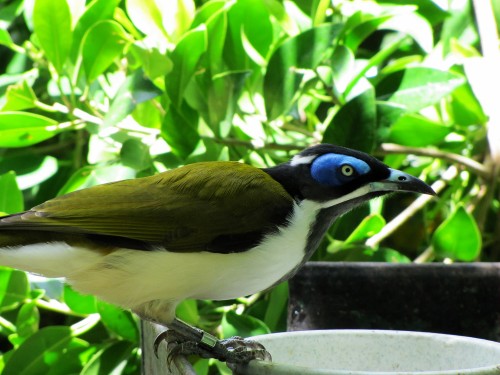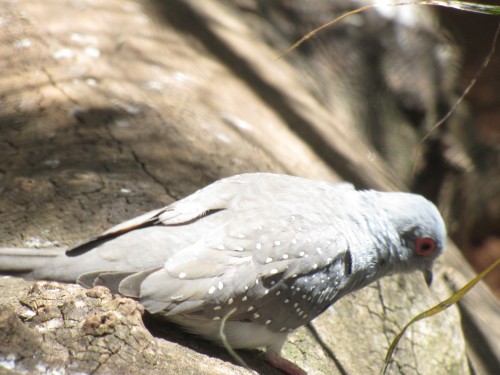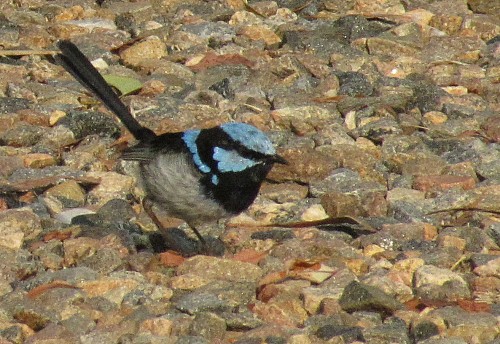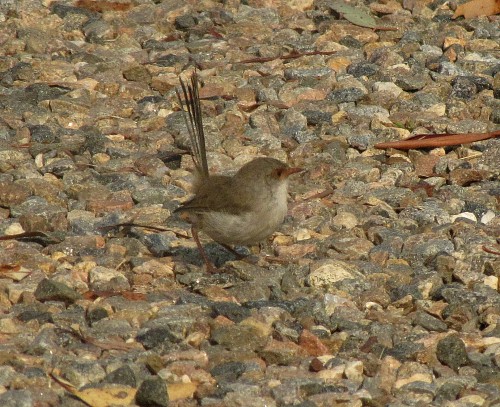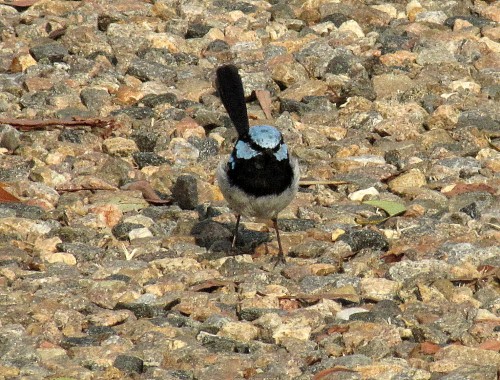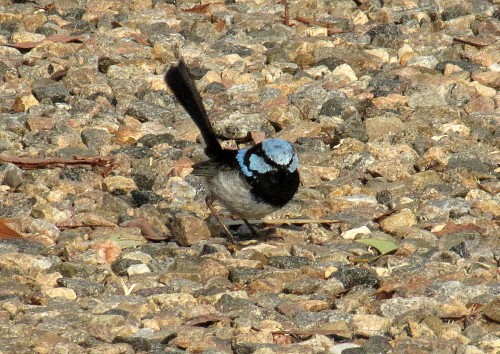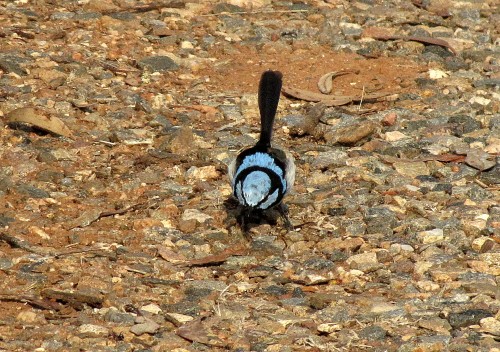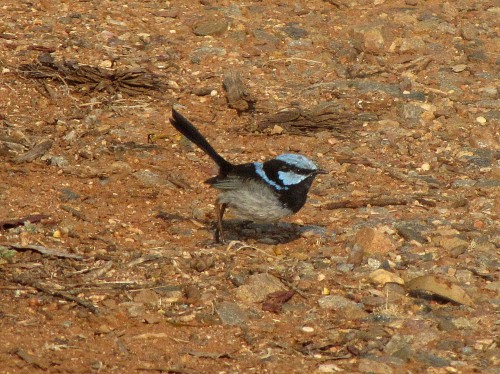Blue-faced Honeyeater, Adelaide Zoo
The first time I focussed my binoculars on a Blue-faced Honeyeater I was amazed at the brightness of its blue face. It was one of those special moments we sometimes get while birding.
As a result of that first great encounter, I enjoy every subsequent observation of this species. On the downside, not every sighting is as good as the one I had earlier this year in one of the walk through aviaries at the Adelaide Zoo here in South Australia. Being a captive bird quite at ease with hundreds of visitors to its home daily, this bird was quite happy to pose for me – or was it just too hungry to fly away. Note the identification band on the right leg.
The Blue-faced Honeyeater is found along coastal northern and eastern Australia, often found far inland from the coast where there is suitable habitat. In south eastern parts of our country it is more of an inland bird, generally avoiding the higher altitudes in Victoria and southern New South Wales.
Its preferred habitats include open forests, watercourses, woodlands, orchards, parks and gardens and farmlands.
For more of my photos of this species and another article click here.
Diamond Dove, Adelaide Zoo
The Diamond Dove is a small, almost dainty dove found across large parts of Australia. It is also easy to keep as an aviary bird and so is popular as a pet bird.
Although we have Peaceful Doves visiting our garden here in Murray Bridge occasionally, we have yet to see or hear a Diamond Dove despite having been observed only a few kilometres from our home. One day we might see this lovely bird.
This individual was photographed through the wire netting of one of the aviaries in the Adelaide Zoo here in South Australia.
Beautiful Mistletoebird
One of my favourite birds is the colourful little Mistletoebird, shown in today’s photo. I can’t say it is a resident species in our garden, but it is a frequent visitor. In our district here in Murray Bridge, South Australia, it is a widespread species occurring in small numbers. They are usually only seen singly, occasionally two.
Today my wife and I were working in our garden and a male landed briefly in a nearby Eremophila bush. It stayed only a few seconds before flying off. The male, as shown in the photo, is far more brightly coloured than the female. In the female, the red is a washed out colour and only present under the tail. She also lacks the dark blue-black colour of the male, being mainly plain brown instead.
As I didn’t have my camera with me today, the photo shown above was taken some years ago, also in our garden.
This species has a special place in our records for our home block. Over the 30 years we have lived here we have planted hundreds of trees, shrubs and bushes. The mistletoebird was the first species to make a nest in a tree we had planted. At least – it was the first one we noticed.
Murder in the garden
Many people enjoy seeing birds, especially those that visit their gardens. People also enjoy seeing birds in parks and reserves, on the beach or along rivers. They are variously described as “cute”, “pretty”, “delightful”, “wonderful” and many other such “nice” words.
Rarely are they described as gory, or brutal or even dangerous. The stark reality is that while many birds are indeed stunning in their colours, amazing in their survival instincts and quite fascinating in their behaviour, some species do have a gory, brutal (in human terms) side to their lives.
A few days ago I was hanging up the washing on the clothes line – or getting it off – whatever – and there was a sudden noisy kerfuffle in the trees nearby. The various honeyeater species were totally upset – and with good reason. A Collared Sparrow-hawk flew ponderously to a branch nearby, clutching a struggling bird in its talons.
The sparrow-hawk proceeded to gouge chunks of flesh off the hapless bird, feathers scattering in the breeze and all the while the rest of the avian community voiced their disapproval – or fears. I tried to sneak up for a closer look. I quickly dismissed the idea of racing inside to get the camera. It appeared to be a White-plumed Honeyeater being eaten.
This is the reality of life in the raw. To survive, the sparrow-hawk must eat. One bird’s death means another bird’s survival. In human terms it seems cruel and gory, but this is the way of web of life.
I didn’t get a photo, so I’ve included one below that I took some years ago.
This article was last update on 10th October 2015.
Superb Fairy-wrens in our garden
Over the almost30 years we have lived in our present home we have rarely seen any wrens in our garden, part of a five acre block of fruit trees and mallee scrub with some native Australian plants thrown in for good measure. In most cases these occasional visitors were the locally common Variegated Fairy-wren. There are several thriving families up the hill in a mallee and native pine reserve about a kilometre away.
In other parts of Murray Bridge the Superb Fairy-wren is the common and dominant species. Just over a year ago we came back from an overseas holiday to be greeted with two Superb Fairy-wrens having quite happily taken up residence in our garden in our absence. It was a delightful welcome home present. In the coming months we saw them frequently, much to our continued delight.
Then they went quiet for a few weeks. Mmmm… had they moved on, we wondered?
To our increased delight they now number three: a coloured male and two uncoloured birds. Had they recruited another from nearby, or was the new one an offspring? We’ll never know. In recent days I’ve seen the three of them often, but sadly the male in in eclipse plumage and has lost most of his colour. In fact, he looks decidedly scruffy, not the magnificent colours shown in today’s photos. These shots were taken a few weeks ago. I also managed a good shot of one of the females (or uncoloured male?).
I should explain that all of these photos were taken in our gravel covered driveway. Our garden is far more attractive than it appears in these photos.
